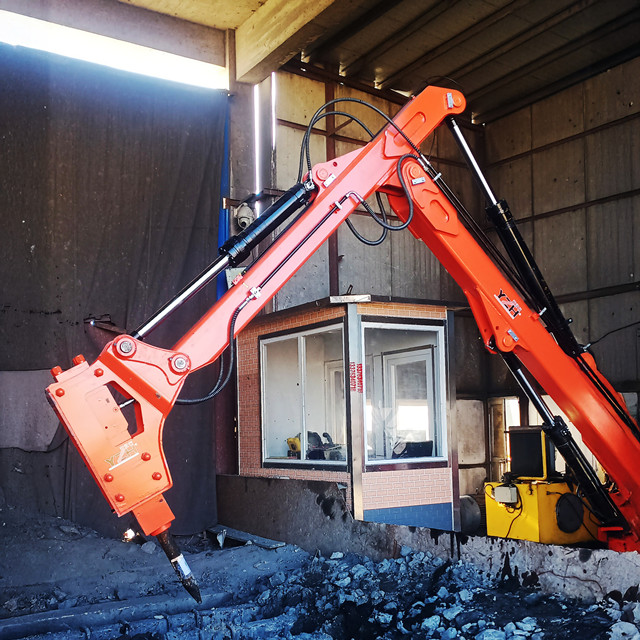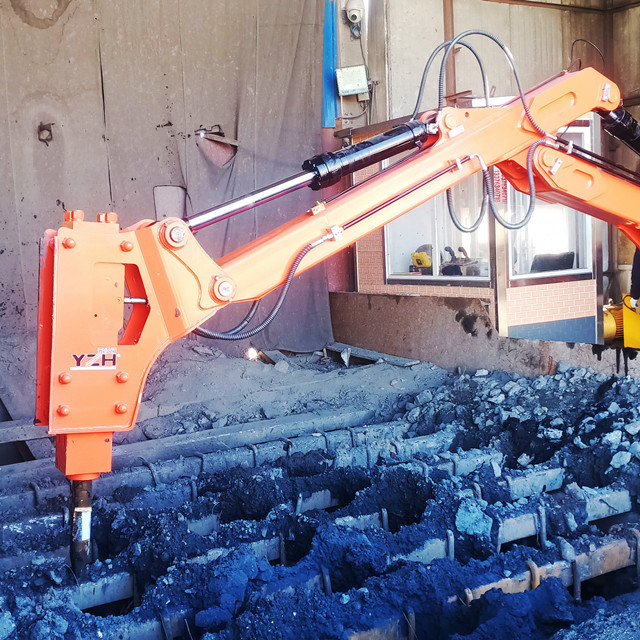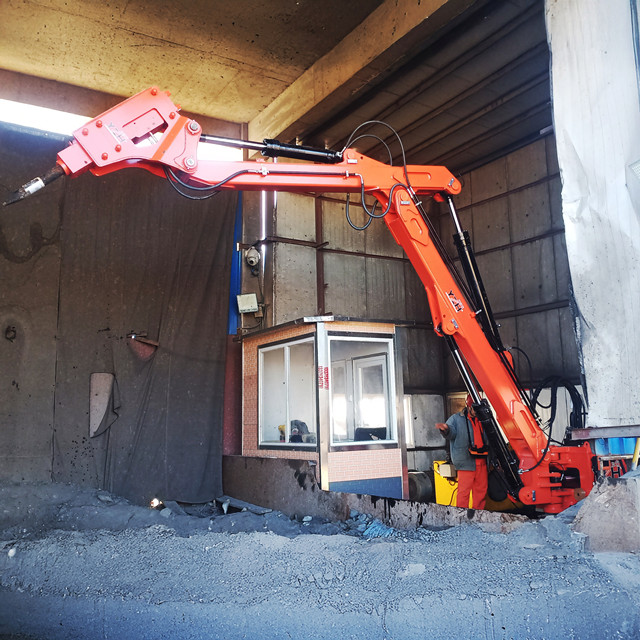
So this plant manager calls me up last week. "Kevin," he says, "we're thinking about one of your boom systems, but honestly, we're not even sure if it's what we need."
I love calls like that. Guy's being smart - asking the right questions before dropping serious cash on equipment.
See, after 20 years of selling these things, I've watched plenty of operations buy the wrong solution. They see a pedestal boom at a trade show, think it looks impressive, and figure it'll solve all their problems. Then reality hits.
Truth is, pedestal booms are fantastic for certain jobs and completely wrong for others. Let me break down where they actually make sense.
Primary Crusher Feed: This is Where We Shine
This is pedestal boom territory, no question.
Here's the Deal
Your primary crusher is the heart of the operation. When it jams, everything downstream stops. And the thing about primary crushers - they're picky about what you feed them.
I was at this limestone quarry in Missouri. They were feeding their primary with a wheel loader. Operator couldn't really see what he was dumping, so oversized chunks would jam the crusher maybe three times a day. Each jam cost them an hour of production while they cleared it.
Why Booms Work Here
With a boom system, the operator can see exactly what's going into the crusher. Big chunk coming down the conveyor? Break it before it causes problems. No waiting, no repositioning equipment, just boom - problem solved.
The boom's always there, always ready. Mobile equipment has to drive over, get positioned, deploy outriggers. Takes time you don't have.
What About Other Options?
Mobile breakers? They're reactive. You're fixing jams after they happen instead of preventing them.
Grizzlies and screens? They help, but they don't solve the problem - they just send the oversized stuff somewhere else. Now you've got a pile of material that still needs breaking.
Jaw Crusher Jams: Speed is Everything
Jaw crushers jam different than other crushers, and booms handle these jams really well.
The Reality
Jaw crushers create this pinch point where stuff gets wedged tight. Not like an impact crusher where material bounces around - jaw jams are solid, packed masses.
Had this concrete recycling outfit with rebar problems. Rebar would catch in the jaw, create a bridge, then concrete chunks would pack around it. Absolute nightmare to clear by hand.
Why Precision Matters
Boom lets you attack the jam strategically. Instead of just beating on it, you can target specific spots to collapse the whole thing systematically.
And you can hit it from different angles without moving equipment. Critical when you're dealing with tangled, interlocked material.
Mobile Equipment Problems
Mobile breakers struggle with jaw jams because of positioning. Crusher throat is usually deep and narrow - hard to get the right angle.
Plus jaw crushers are often crammed into tight spaces. Mobile equipment can't maneuver, but a boom works from one spot with full rotation.

Gyratory Maintenance: The Hidden Application
People think jams when they think booms. But maintenance? That's where these things really prove their worth.
The Challenge
Gyratory crushers are huge. Crushing chamber might be 15 feet deep. When you need to change liners or do other maintenance, getting in there safely is a major pain.
Old way was building scaffolding or using mobile platforms. Takes forever, costs a fortune, and it's dangerous as hell.
Boom Advantage
Boom can position people and tools exactly where they need to be. Controlled movement, stable platform. Makes liner changes way safer and faster.
Worked with a copper mine where liner changes used to take three days with scaffolding. Same job takes one day now with the boom providing access.
Safety Factor
This might be the biggest win. Gyratory maintenance is scary work - confined space, heavy stuff overhead. Boom gives you a stable, controlled platform. Huge safety improvement.
Apron Feeders: The Forgotten Problem
Apron feeders handle big material, but there's always a limit.
What Happens
When material's too big for the feeder, bad things happen. Damages chains, jams the drive, creates safety hazards.
Saw this at a steel mill. Occasionally pieces of structural steel would be too long for the feeder. They'd hang up, jam everything, and guys would have to cut them out with torches.
Boom Solution
Boom positioned over the feeder can break oversized stuff before it causes problems. Key is catching it early, before damage happens.
Best part? Feeder doesn't have to stop. Boom operator works on problem pieces while everything else keeps running.
Other Approaches
Mobile equipment works but you have to stop the feeder and position equipment. Adds downtime.
Cutting with torches works but it's slow and dangerous. Plus you're often working in tight spaces.
Flow Problems: The Sticky Situation
Material flow problems in bins and hoppers are more common than you'd think.
Bridging and Rat-Holes
Some materials just don't want to flow. They bridge across openings or create rat-holes that stop discharge completely. Sticky stuff, wet material, irregular shapes - all troublemakers.
Had a cement plant with chronic limestone flow problems. Material would bridge across the discharge, stopping everything. They tried air cannons with limited success.
Why Booms Work
Boom can break up bridges and clear rat-holes without anyone entering the bin. Reach and precision let you target problem areas from a safe distance.
Unlike air cannons, booms provide positive mechanical action. They reliably clear problems, even with abrasive or corrosive materials.
Safety Issue
Bin work is extremely dangerous. Confined spaces, material avalanches, toxic atmospheres. Remote boom operation eliminates most of these risks.
Just Making Things Smaller
Sometimes you just need to break big rocks into smaller rocks. Booms are good at this basic job.
Stockpile Work
Big operations accumulate piles of oversized material over time. Needs to be reduced for processing or disposal.
Mobile equipment works, but booms can be more efficient for large stockpiles. Don't need to constantly reposition. Set up right, one boom can work a huge area.
Quality Control
Some jobs need precise size control. Booms let you selectively break only the oversized pieces, leave the good stuff alone.
Important in aggregate production where too many fines hurt product value. Boom precision minimizes overbreaking.
Where Booms Don't Work
Let's be honest about limitations. Booms aren't right for everything.
Small Operations
Processing a few hundred tons a day? Economics probably don't work. Mobile equipment or manual methods are more cost-effective.
Multiple Locations
Need breaking capability all over the place? Mobile equipment might be better. Booms are fixed installations that work best when breaking needs are concentrated.
Soft Materials
Stuff that doesn't need much impact energy - soft coal, certain biomass - might not justify the investment. Simpler solutions often work better.
No Room
Some places just don't have space. Underground with low ceilings, cramped layouts, overhead obstructions - might need mobile solutions.
How to Choose
Key is understanding what you actually need:
Volume and Frequency
High volume, frequent breaking = booms make sense. Low volume, occasional breaking = mobile equipment probably better.
Location
Breaking needs concentrated in one spot = boom territory. Multiple locations = mobile might be better.
Downtime Costs
Expensive downtime = booms pay off with rapid response. Manageable downtime = mobile might be adequate.
Safety
Need to keep people away from active equipment = remote booms win.
Precision
Need controlled, precise breaking = booms excel. Just making things smaller = mobile might suffice.

Real Talk
Pedestal booms are great at specific jobs where their advantages - precision, speed, safety, positioning - actually matter.
Best applications have high volume, frequent breaking needs, expensive downtime, and safety concerns. When all that lines up, booms often pay for themselves quickly.
But they're not magic solutions. Understanding where they work - and where they don't - is key to making smart equipment decisions.
Don't buy a boom because it looks cool. Buy it because it solves a real problem that's costing you money every day.
Not sure if a boom fits your situation? Contact us now. Every operation's different, and the best solutions are always tailored to what you're actually dealing with.















